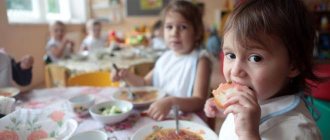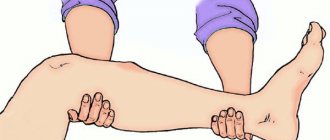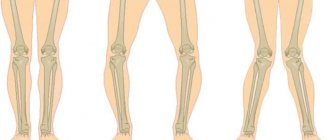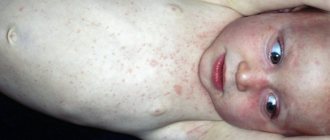3635
The problem of excess weight does not only affect adults. Childhood obesity has become the No. 1 issue for 10% of girls and boys around the world. Today the World Health Organization speaks of a serious danger. Over 10 years, the number of children diagnosed with obesity has doubled. And this is not just an external disadvantage.
Obesity leads to a shortened life span, decreased immunity, and frequent infectious diseases. And also to the costs of maintaining health, treating the heart, blood vessels, liver, and pancreas.
If a child has significant weight, without endocrine diagnoses, it is necessary to urgently take action, adjust nutrition and lifestyle. What should a children's diet be like for weight loss? How to motivate a child or teenager to stick to their chosen diet? And when does excess weight become a real problem - from a medical and ethical point of view?
Excess weight in a child: normal or pathological?
Excess baby weight is not considered a pathology. Plump arms and legs, lush folds on the bends of the elbows touch grandmothers and parents. Such a child is often called a strong one, and the mother is often called a wet nurse.
Indeed, weight gain while breastfeeding is not a problem if... if over time it does not develop into extra pounds, and later, in preschool age, does not become a cause of obesity and the need for a children's diet.
The newborn moves little and sleeps a lot. With the high fat content of mother's milk, he easily gains weight. And only after six months the rate of weight gain decreases. The baby grows and stretches, spending kilograms for growth and development.
The situation is worse if the child has grown up, and the extra grams remain with him. If, with high calorie food, he is limited in movements, passive. By the age of 3-4, he becomes obese.
What are the signs of morbid excess weight? How to determine the need for a diet for a child?
Reviews, results and photos
Svetlana, mother of a 9-year-old girl:
My daughter began to recover a couple of years ago. When none of the existing clothes fit in size, I looked at it from the other side. This is no longer a baby, but a chubby girl. We removed all junk food from the house. Anya and our whole family ate only healthy foods. In a year she lost 10 kg. In addition to the diet, my daughter wanted to exercise in the pool and this helped a lot. The weight has returned to normal, but she still goes to training with joy.
Katerina, mother of an 8-year-old boy:
My son went to school and began to gain weight. I didn’t even notice at first, everything happened gradually. But when I saw large legs and a hanging belly, I realized that something needed to be changed. Seryozha chose the football section, we changed the diet a little. They didn’t reduce calories, they just gradually removed all harmful foods. In 7 months, my son lost 5 kg and became his old self. Football remained in his life.
Angelina, 10 years old:
I started to gain weight when I broke my leg in a competition and stopped doing gymnastics. My grandmother cursed and called me fat, and I wanted to lose weight. I looked up advice on the Internet and started eating only good food. I didn't eat in the evening. It was very difficult and I ate too much on cakes several times, but finally I was able to lose 5 kg in six months. Now I look the same as before and my grandmother is happy.
Diagnosis of obesity: when excess weight becomes a pathology
Excess weight is a subjective assessment. We can say that a person is dense, or we can evaluate his physique as “strong.” But obesity is already a diagnosis. And there are certain criteria for setting it up.
The diagnosis of childhood obesity is made by a pediatrician or endocrinologist. We must understand that making a diagnosis is already a disease. Even with the first degree of obesity, the child’s metabolism is impaired, immunity is reduced, there are allergies and frequent constipation.
Obesity develops over time, over 2-3 years. During this time, the child gradually increases fat reserves. You can suspect something is wrong and try to prevent the disease earlier. When should you sound the alarm and put your child on a weight loss diet?
The diagnosis of obesity is made when a child’s body weight exceeds the norm by more than 15%. There is no obesity level yet, there is excess weight. From the 15% line, the child is registered with an endocrinologist and is subject to treatment.
There are several degrees of childhood obesity:
- Excess body weight by 15-25% – 1 degree;
- Excess weight by 25-50% – 2nd degree;
- Excess weight by 50 – 100% – 3rd degree;
- Excess weight by more than 100% – 4th degree.
Note: in adults, obesity is diagnosed using different numbers. So, for women, the diagnosis is made if body weight exceeds the norm by more than 20%. And for men – more than 10%.
In most children with this diagnosis, the degree of the disease is initial, first or second. This allows you to cure the child and get rid of obesity.
Fish quenelles
A good alternative to fish cutlets and meatballs. They are perfect with homemade ketchup or fruit sauce, such as peaches.
Dietary dishes for children: recipe for fish dumplings
- Pass 350 grams of white fish fillet through a meat grinder: pike or pike perch.
- Lightly dry 2 teaspoons of flour in a dry frying pan, pour milk into the pan in a thin stream, stir vigorously so that there are no lumps, and add salt.
- Cool the sauce and add it to the minced fish. Beat the yolk of one egg there, beat the white into a strong foam and gently fold into the minced meat.
- Form small balls from the minced meat and boil them in boiling salted water until tender.
- Sauce: Peel 300 grams of peaches, remove the pits and cut into small cubes.
- Heat the olive oil in a saucepan, lightly sauté a quarter cup of finely chopped onion (about five minutes), add a minced garlic clove and a generous pinch of sweet paprika flakes.
- After a minute, add three tablespoons of lemon juice, a couple of tablespoons of sugar to the saucepan, season with salt and pepper and cook over low heat for about five minutes. Then add the peaches to the saucepan and cook for another 5-10 minutes.
- If the sauce is too thick, add 2-3 tablespoons of water.
- Grind the finished sauce well in a blender.
Diagnosis of excess weight pathology by BMI
BMI is another indicator that is used to diagnose obesity. It also shows whether it is time to “put” the child on a diet.
The BMI indicator is calculated using the formula:
BMI = body weight\(height x height)
The obtained result is compared with the table data.
Table - BMI and amount of body fat
Be sure to read: The correct ratio of height and weight in men
| Up to 16 | Weight deficiency or dystrophy |
| 16-19 | underweight |
| 19-25 | norm |
| 25-30 | excess body weight |
| 30-35 | obesity 1st degree |
| 35-40 | obesity 2 degrees |
| More than 45 | obesity 3rd degree |
The need for a diet arises not only with severe degrees of obesity - 1, 2 or 3. It is time to put a child on a diet if the BMI is above 27-28 units.
Diet for children - fruits
The only fresh fruits you can give are apricots, bananas, peaches, and watermelons. Juices squeezed from fresh fruits can be consumed as long as they are not sour and are grown in the same area where the child lives. The healthiest and safest product in this diet is oven-baked apples. You can also eat jelly, compotes, dried fruits, and mousses.
Why should obesity be treated?
Excess fat reserves in children are deposited mainly under the skin. In childhood, they form touching folds. In preschool - they cause constipation and allergies. In school - cause shortness of breath and digestive diseases (cholecystitis, pancreatitis, fatty liver hepatosis).
In girls, fat reserves increase in the mammary glands. But in general, they delay sexual development.
In adolescence, high blood pressure and insulin resistance are added to existing problems. In boys with obesity, the penis is underdeveloped; in girls, menstruation is absent for a long time.
Treatment goals for childhood obesity
Reducing body weight to normal is the main task, but far from the only one. For treatment in childhood and adolescence it is important:
- change your attitude towards food - it should not be the main source of positive emotions;
- develop the right eating style in the family;
- increase physical activity;
- improve the overall fitness of the body;
- learn how to correctly alternate physical activity modes in order to lose weight faster and prevent overexertion;
- provide the body with all the necessary materials for growth; unbalanced diets can cause low bone density and hormonal imbalance;
- give children the opportunity to live a full life and communicate with peers;
- prevent disturbances in the metabolism of fats and carbohydrates, sexual development, stress on the heart, blood vessels, digestion, and nervous system;
- reduce the risk of diabetes in childhood, as well as stroke, heart attack and sudden cardiac arrest in adulthood.
In uncomplicated forms of the disease (no diabetes, hypertension, changes in lipid profile), the short-term goal is to switch to a healthy diet and maintain the desired level of activity. Weight loss is allowed slowly. If the consequences of obesity are present, a more intensive program is required.
In any case, it is necessary for the family to understand that the problem of increased weight will be relevant for a very long period of time. If the amount of adipose tissue is increased, it may return to its previous level after reduction. This happens after relaxing the diet and reducing physical activity.
It is also important to note that, regardless of the cause, proper nutrition is required for treatment. Medicines are prescribed only to help metabolism, but they are absolutely ineffective if there is an excess of calories in the diet.
We recommend reading the article about diabetes insipidus in children. From it you will learn about the causes of diabetes insipidus in children, signs and symptoms of the disease, diagnosis and treatment of diabetes insipidus in children, as well as folk remedies for therapy.
And here is more information about hormones in children.
Diet and movement: solving the problem of excess weight
Among the various factors that contribute to weight gain, the most important are overeating and lack of exercise. Fast foods have deprived children of healthy food, and gadgets have deprived them of a normal pastime. Today, children do not walk in the courtyards of high-rise buildings, but sit in front of computer screens. They do not nibble carrots and apples, but snack on chips and soda. These factors cause obesity in 95% of children of all ages, and only in developed countries.
Note: the problem of childhood obesity and the need for a diet for children at 10 years old or 5 years old is relevant for developed civilized countries. This is not the result of a “good” life. This is the result of unhealthy habits.
To solve the problem of obesity, it is necessary to return to the norm of active movement. Walk more often, play football, swim, do gymnastics in the gym. And it is imperative to limit a number of foods that contribute to weight gain, and create the correct children’s diet for weight loss.
We take age into account
Important: before making any changes in diet, you should consult your doctor. He will tell you what diet the child needs.
Toddlers under 5 years old are prohibited from losing weight in any way. All internal organs and body systems are still being rebuilt and changing. Refusal of any food can lead to an imbalance of substances. This leads to metabolic disorders.
How to lose weight for a 5-year-old child: you can deprive him of some foods: unhealthy sweets, confectionery, soda, fast food. For dessert, let him eat fruits and berries. However, it is impossible to sharply reduce the calorie content of your daily diet.
At 7–8 years old, children most often gain weight due to school. Previously, the child moved actively, ran, jumped, played, but now he sits still for half the day. How to lose weight for a 7 year old child? It is necessary to increase his physical activity. At this age, children are usually sent to sections. He himself must choose what to do. A diet for an 8-year-old child should completely exclude harmful foods.
At 9–10 years old, the cause of excess weight is the computer and fast food. Activity is decreasing, as computer games are already clearer and more interesting.
Fast food is replacing sweets, because it’s always interesting to try something new.
Children's diet: how to approach weight loss
A child's diet is different from an adult's. There are a number of principles that must be followed when choosing a child's menu.
What is important to consider:
- The diet menu for an overweight child should be complete - the child should receive everything that is necessary for his growth and development.
- It is necessary to exclude unhealthy ballast products from the menu - they are the cause of extra pounds.
- Pleasure from eating – this factor is especially important for baby food. It is necessary to create a positive mood and properly motivate a child, schoolchild or teenager.
And now - in more detail about each principle.
Diet and nutritional value
A child's diet should be wise in terms of food choice. A child’s body is growing, and it needs to be fed - vitamins, minerals, carbohydrates, proteins, fats - in the right quantities and in an digestible form.
It is necessary to remove from the diet only what supplies ballast substances.
What to remove from food
It is necessary to exclude ballast and harmful foods from the child’s diet menu, namely:
- Food with flavorings, preservatives, taste substitutes and other additives is something that is not digested at all;
- Palm fats and products containing them;
- Refined carbohydrates – These supply large amounts of sugars.
When does a child need a diet?
A diet is needed if the child has stomach problems, diabetes or other diseases. But much more often, overweight children require dietary restrictions. The tendency towards obesity actively develops in the first 6 months of a baby’s life and in adolescents 10–15 years old.
If in infants obesity only affects health, then at an older age the child develops many psychological problems. This is a lag in physical development, ridicule from peers, offensive nicknames.
The pleasure of diet food and more
In order for a son or daughter to want to stick to a diet for weight loss, it is necessary to diversify it... with positive emotions. Offer a diet in the form of a game with a set of points. Or compensate the child for the loss of sweets with a weekly “salary”. The purpose of these actions is to maintain emotions at a positive level.
A children's diet should not be “hungry”. Of course, a child who is accustomed to constantly “chewing” will initially feel hungry. He will want to eat and replenish himself with calories. However, over time, food preferences will change, and enzymes will be developed to digest simple food.
Side effects
What harm can a diet cause at such a tender age:
- metabolic and gastrointestinal disorders, allergic reactions due to incorrectly selected products;
- stress, nervous shock due to the wrong approach to starting a diet.
Diet at this age is just proper nutrition. Therefore, it cannot cause much harm.
What fats does a child not need?
Products prohibited in the diet of any child include:
- Unnatural fats (margarine, light butter) - like high-calorie foods with synthetic additives that form fatty deposits.
- Palm oil based products. This vegetable fat is cheap and refractory. Its low cost ensures the popularity of the oil among manufacturers of any products. And refractoriness causes harm and accumulation of fatty deposits. Few people know that palm fat melts at temperatures above 43°C. In the human stomach, at 38°C, it does not break down. When it settles on the mucous membranes, it leads to the accumulation of fat. What else is important to know? Palm oil is found in many store-bought products. It is used in the production of candies, cookies, condensed milk, most packaged dairy products, mayonnaise, hamburgers, and French fries. All confectionery fats are produced on its basis. Palm oil is present in all McDonald's and Fast Food products. The listed products must be excluded from the child’s diet.
Be sure to read: Variation of mono-diet menu for 7 days
A weight loss diet for children prohibits giving your child animal fats due to their high calorie content. However, saturated fatty acids are necessary for the synthesis of hormones, the conduction of nerve impulses and the functioning of the lungs (they line the pulmonary alveoli from the inside). Therefore, even on a diet, the child is given fish in small quantities. And fatty meat is replaced with poultry to provide the child’s body with building protein.
Fats allowed in children's diets include vegetable oils - always in natural liquid form:
- Sunflower;
- Linen;
- Olive;
- Corn.
These oils provide the child’s body with unsaturated fatty acids necessary for the synthesis of cell membranes and the transport of vitamins A and E.
Also allowed fats include milk fats; they are found in dairy products:
- Sour cream;
- Fatty fermented baked milk;
- Fat cottage cheese;
- Full fat milk.
Milk fats contain the most digestible form of saturated fatty acids, which are used to synthesize testosterone and protect nerve fibers. Due to the increased calorie content, the amount of milk fat in the food of a child diagnosed with obesity is controlled.
Note: you cannot exclude all fats from the menu. Fatty acids are necessary for the body. But confectionery fats are subject to unconditional exclusion from the menu of a child on a diet. They do not provide any benefit and cause harm.
Example of a weekly diet menu for a child
When creating a menu for a children's diet, you must remember that the child has a more active metabolism, so he quickly loses weight with a normal diet that excludes unhealthy snacks and the consumption of prohibited foods.
Let's consider a sample menu for a week for a children's diet (4 meals a day).
Monday
| Breakfast | Boiled pasta with butter. Tea. Bun |
| Dinner | Cabbage soup made from fresh cabbage with meat. Cutlets with buckwheat porridge. Yogurt sauce. Kissel. Bread |
| Afternoon snack | Fruits. Pudding from cottage cheese and bananas. Juice |
| Dinner | Fish in an egg. Bread. Kissel |
Tuesday
| Breakfast | Milk rice porridge with butter. Tea. A cheese sandwich |
| Dinner | Borscht with meat and sour cream. Chicken meatballs with boiled potatoes and herbs. Compote. Bread |
| Afternoon snack | Fruits. Carrot casserole. Juice |
| Dinner | Stewed vegetables with chicken. Bread. Kissel |
Wednesday
| Breakfast | Curd casserole with yogurt. Tea with lemon. Cookies "Maria" |
| Dinner | Chicken broth with egg noodles. Beef Stroganoff with rice. Compote. Bread |
| Afternoon snack | Fruits. Fresh cabbage salad. Juice |
| Dinner | Chicken cutlets. Bread. Kissel |
Thursday
| Breakfast | Millet milk porridge. Tea. Biscuits |
| Dinner | Lentil soup. Pozharskaya cutlet with stewed cabbage. Compote. Bread |
| Afternoon snack | Fruits. Salad of tomatoes and cucumbers. Juice |
| Dinner | Pancakes with liver / cottage cheese. Kissel |
Friday
| Breakfast | Pilaf with dried fruits. Tea. Sandwich with butter |
| Dinner | Chicken and cauliflower soup. Fish balls with mashed potatoes. Compote. Bread |
| Afternoon snack | Fruits. Salad with cheese and vegetables. Juice |
| Dinner | Meat casserole with tomato sauce. Bread. Kissel |
Saturday
| Breakfast | Milk vermicelli. Tea. Biscuits |
| Dinner | Puree potato soup with croutons. Pilaf with meat. Compote. Bread |
| Afternoon snack | Fruits. Berry souffle. Juice |
| Dinner | Omelette. Bread. Kissel |
Sunday
| Breakfast | Beetroot in sour cream. Tea with lemon. Sandwich with butter and cheese |
| Dinner | Vegetable soup with sour cream. Fish stew with potatoes. Compote. Bread |
| Afternoon snack | Fruit salad. Cookies "Maria". Juice |
| Dinner | Curd noodles. Kissel |
For second breakfast and before bedtime, the child should be given a glass of kefir, yogurt or homemade yogurt; it is recommended to replace sugar with honey.
This diet is suitable for children 5–6 years old and older, and the menu can be adjusted at your discretion. The main thing is to avoid prohibited foods and maintain the ratio of essential nutrients.
The duration of the diet is 1.5–2 months. During this time, the child develops a habit of proper nutrition, which must be maintained in the future.
For obese children, the diet should be more strict. With completeness of the first degree, the ratio B:F:Y is maintained in the proportion of 1:0.85:3, degree II - 1:0.75:3, degree III - 1:0.7:2.5.
What carbohydrates should a child not eat on a diet?
Children on a diet should not eat high-calorie carbohydrates that are quickly absorbed, namely:
- Confectionery sweets;
- Chocolates, bars;
- Hamburgers;
- Fast food products;
- Sweet soda;
- Potatoes and white flour bread.
Children on a weight loss diet can eat the following carbohydrates:
- Cereals (except polished rice);
- Vegetables (except potatoes);
- Fruits;
- Wholemeal bran flour and bread made from such flour.
The effect of carbohydrates is different. Simple and complex carbohydrates are digested differently. When broken down slowly, they provide energy for movement, and when broken down quickly, they form fat. What is the difference?
You can gain weight and get fat on “fast” carbohydrates. These are low-fiber products, purified and refined, intended for quick preparation. They quickly break down in the intestines and supply large amounts of sugars into the blood. As a result of the release of glucose, the process of its accumulation is activated. Excess sugars turn into calorie deposits - fat.
Complex carbohydrates are digested differently. The large amount of fiber does not allow them to break down quickly. Sugars enter the blood gradually, without accumulation and formation of fat. Therefore, eating complex carbohydrates does not lead to weight gain and the development of obesity.
It is important to remember: with excess glucose, fats are synthesized. Excess glucose is formed when consuming even small amounts of quickly digestible carbohydrates.
Features of a children's healthy diet
Designed by Freepik
Children's menu should be balanced and varied so that their body is saturated with proteins, fats, carbohydrates and other beneficial substances.
In order for food to bring only benefits to the child, the following rules must be followed:
- The daily menu should contain the required amount of proteins, fats, carbohydrates (BJU), as well as vitamins and minerals.
- Parents should monitor the calorie intake so that the baby consumes as much energy from food as he expends.
- Include new recipes on the menu periodically.
- Correctly distribute the number of calories for each meal: breakfast - 25%, lunch - 40%, dinner - 25%, and the rest for an afternoon snack.
- The child should eat 4 times a day with a break of 4-6 hours.
- Proteins are necessary for children; they can be found in cottage cheese, dietary meat, fish, milk, and eggs.
- Complex carbohydrates provide energy (porridge, fruits, bran bread, vegetables, some sweets).
- The amount of simple carbohydrates (confectionery, sugar) should not exceed 20% of the total amount of carbohydrates.
- Meat, vegetables, fruits, milk, butter, sugar (small amounts) can be consumed every day.
- The child should eat eggs, cheese, fish, cottage cheese 1-3 times a week.
- Boil, steam, stew, bake foods.
- It is better to avoid mustard, pepper, horseradish, and vinegar. This applies to spicy, fried foods, coffee, fast food, semi-finished products, mushrooms, perishable confectionery, and smoked meats.
- You need to drink at least 1.5 liters of clean water per day, and in the hot season - from 2 liters.
Water should be drunk 30 minutes before meals or 1.5 hours after it. You can also drink fresh juices, fruit drinks, and green tea. You should avoid store-bought juices and sodas.
Attention! Fruits can be eaten between meals, not during. Otherwise, the likelihood of digestive disorders increases.
Be sure to look: Options for a healthy dinner What is a healthy breakfast Is it worth eating lunch with proper nutrition Rules and recipes for the menu with proper nutrition
What to feed your baby on a diet
In order to give the child the opportunity to fully grow and develop, the diet is based on complex carbohydrates and proteins. The children's diet is as follows:
- Fruits and vegetables make up 45% of the diet. This also includes greens. Note: the ratio of vegetables and fruits can be the same or there should be more vegetables than fruits.
- Fermented milk products, always natural, without additives – 25% of the diet.
- Complex carbohydrates, high in fiber and low absorption rate - 15%.
- Proteins (lean meat, chicken, lean fish) – 10%.
- Fats – 5%.
Note: the given standards can be used as a guide. The diet of a 5-year-old child will be different from the diet of a 10-year-old child. Fluctuations in the percentage of fruits and vegetables, carbohydrates and dairy products by 3-5% are quite acceptable.
Minestrone
Thick, aromatic Italian minestrone soup is made from seasonal vegetables. And the more of them in the refrigerator, the richer the taste will be.
Dietary dishes for children: minestrone soup recipe
- Peel and finely chop one red onion and a clove of garlic.
- Cut 2 carrots, 2 celery sticks and a small fennel tuber into small cubes and place them in a bowl.
- Cut the leeks in half lengthwise and rinse well to remove sand. Then cut it into 1 cm slices. Add to the bowl with the vegetables.
- Peel one large potato and cut it into small cubes.
- Using a blender, grind 800 grams of canned tomatoes in their own juice (if you get tomatoes with skin, you need to peel it).
- In a heavy-bottomed saucepan over medium heat, heat 3 tablespoons of olive oil, add garlic, onion, carrots, celery, zucchini, leek, half a teaspoon of dried oregano and simmer for about 15 minutes, stirring occasionally.
- Add potatoes, crushed tomatoes and vegetable broth (some of the broth can be replaced with homemade tomato juice). Keep in mind that you will need about a liter of broth, but you can pour it in parts, bringing the soup to the desired consistency.
- Mix all the vegetables thoroughly, cover the pan with a lid and leave to simmer for half an hour until the potatoes are ready.
- Meanwhile, coarsely dice one large red tomato, zucchini and bell pepper (optional). 10 minutes before the potatoes are ready, add chopped vegetables and a can of canned beans to the soup (the liquid must be drained first).
- If necessary, add hot vegetable broth and season the minestrone with salt and pepper to taste. Pour into bowls and sprinkle with chopped basil leaves and grated Parmesan.
Diet tricks: what to do if your child asks to eat
Since nutrition correction requires changing eating habits, the question often arises: how to put a child on a diet?
- If you want to eat, drink water. This rule is good for health and weight loss. It ensures better absorption of foods, reduces appetite and slows down weight gain. If the desire to eat something arises, invite your child to drink a glass of plain water. And only after that, after half an hour, feed him food.
- Interesting pastime. Thoughts about food arise when there is nothing to do. Giving your child something interesting to do will distract him from the desire to chew.
- Adult support. The best option for support is to “go on a diet” together and limit yourself to the consumption of the above products.
- The illusion of choice. If a child asks for something that is not allowed, offer him several permitted foods - an apple, a banana or homemade cookies, to choose from.
- Make your own sweets. For example, candies made from dried fruits and nuts (grinded, shaped and placed in a candy box).
Be sure to read: Is it possible to speed up weight loss and how to do it?
Melt with dried fruits
An obvious, but somewhat unusual type of pilaf. Not a dessert, but an independent main course. If desired, you can add pieces of pheasant, rabbit or turkey meat to the pilaf with dried fruits. In this case, the meat is lightly fried separately, and then placed on a layer of prepared onions. Then everything goes according to plan.
Dietary dishes for children: recipe for pilaf with dried fruits
- For this pilaf you will need any dried fruits: dried apricots, raisins, pitted dates, prunes (150 grams each). You can also take nuts: walnuts, cashews, almonds (300 grams in total).
- The main ingredient is long grain rice, such as jasmine. Soak 700 grams in hot (60 degrees) water and add salt.
- Wait for the water to cool and check the rice - it should have increased in size and can be easily crushed with your fingernail. If the rice is not ready, repeat the operation with boiling water.
- Meanwhile, cut one large carrot into fairly thin slices, and cut three medium onions into “feathers”.
- Fry the onion in vegetable oil, first over medium heat, then over low heat. There is no need to rush, bring the onion to a confident golden color and a mind-blowing aroma.
- In a separate frying pan, fry the carrots in butter. Place rice in a cauldron with onions and carrots on top. Pour boiling water so that the water covers the contents of the cauldron on your finger, salt, add a teaspoon of cumin and barberry.
- Keep the cauldron on high heat without a lid until all the water is absorbed into the rice.
- Meanwhile, separately fry dried fruits and then nuts in butter. As soon as the water is absorbed into the rice, place the dried fruits in the cauldron, turn off the heat, cover it with two clean waffle towels and cover it tightly with a lid.
- In half an hour the pilaf will be ready. Gently mix the contents so as not to break the carrots and serve the pilaf hot.
What else you need to know about children on a diet
Take note of a number of tips that will make your transition to a long-term diet for your child easier:
- Do not take your child on a diet with you shopping (to a store, market, supermarket). This will definitely make you want to eat something forbidden, and can lead to hysterics.
- If the child is small, do not allow anyone to treat him with candy or sweets. Including grandmothers, relatives, friends.
- Cook your healthy meals together. This can motivate the child to eat on a diet. I cooked it myself, ate it myself, and even treated my friends in the yard and school.
- It is difficult to teach a child, but you can explain to a teenager the difference between the desire to “chew” and the feeling of hunger. “Chew” is formed for pleasure, and hunger is formed for nutrition, energy and growth.
And one more thing: a child’s requests for sweets often appear due to lack of attention. Psychologists note that instead of candy, it is better to offer a joint game, or take the baby in your arms, or just sit together. In 70% of cases this is received positively and works well. Psychologists also say that you should not use food as a reward.
If a child eats sweets in secret from you, it is useless to scold him. It’s better to come up with a real motivation - why you need to go on a diet and lose weight. Then the son or daughter themselves will be interested in the result.
How to help prepare
A few tips will help encourage your child to lose weight:
- Forcing him is a pointless exercise. Orders will only achieve stress and tension. He will “steal” excess and unhealthy food from the refrigerator while you are not looking. Or he'll just be miserable.
- You need to show by example how to eat right. Little people do not perceive words; they copy the behavior of the people around them.
- You can’t buy unhealthy food for home; let your child see that the whole family eats healthy, balanced food.
- Try to visit the store yourself. All junk food is placed so that children can easily reach it. There is no chocolate in front of your eyes - there is no desire to replace the apple with it.
- Provide psychological support to your daughter or son. For every pound you lose, give a small gift or a trip to the zoo. You can write or draw these rewards and hang the sheet on the refrigerator.
- In an unclear situation, explain that he is always the most beautiful, but his weight affects his health. There is no need to say anything bad about his appearance. Focus on the health risks.
- You can’t put pressure on the baby, you need to help him cope with all the difficulties and then the excess fat will gradually disappear.
Misconceptions of parents
There are many misconceptions about how and what to feed a baby during illness.
- Error 1. If a child refuses to eat during illness, then he must be forced to eat. In fact, refusal to eat is caused by high intoxication of the body by pathogenic microbes. Force feeding may cause vomiting and nausea.
- Error 2. For appetite, parents offer the patient chips, snacks, chocolate, and cakes. High calorie content, lack of nutrients and microelements can only lead to a worsening of the condition of the sick baby.
- Mistake 3. The diet for a sick child should consist only of fruits. Everyone knows that fruits are a source of vitamins, fiber, and pectin. But with intestinal infections, the high content of organic acids found in berries and fruits can only aggravate the course of the disease. Fruits can be used to prepare fruit drinks and compotes.








